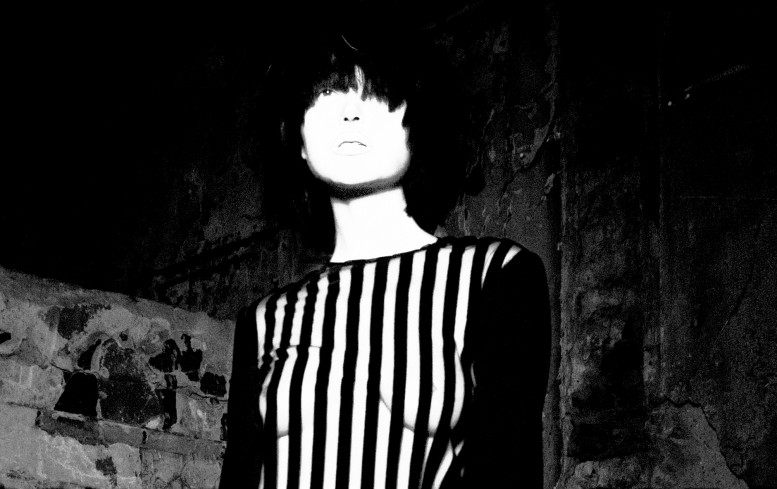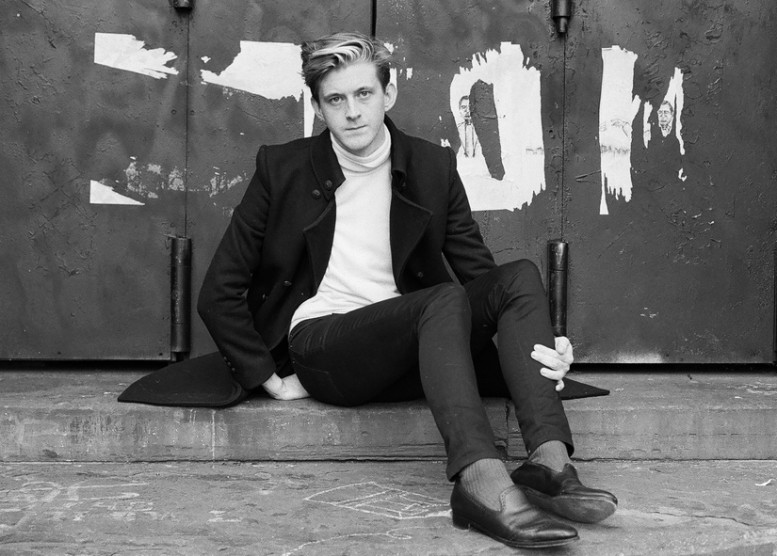Meet the new avant-garde revolutionaries of the high fashion set. There are not many designers that come around that cite 18th century philosophers as their main source of inspiration, but the duo behind the London based fashion house Maison Fin de Saison are not your typical designers. Calling them simply provocative or edgy might be a cop out and certainly an understatement. There is a definitive sense that the designers behind Maison Fin de Saison, which translates roughly to House, End of the Season, use their fashion house as a collective voice to experiment creatively with their deeply fascinating, beautifully contradictory beliefs and philosophies with roots in French 18th century romanticism and Eastern transcendentalism. Maison Fin de Saison in that regard is a hypothetically unsolvable Rubik’s cube of unending dualities that translate right down to the beautiful pieces they design. With applications of uncommon fabric pairings, unusual cuts, and studies in androgyny you could say that contrast is a part of the dogma of Maison Fin de Saison. What is that dogma exactly? Each new collection is presented with a black and white fashion film (see film after the jump) and even the brand itself is presented on a platform of black and white because, as the designers point out, a monochrome palette is essential in communicating their complex ideas. Their Fall/Winter 2012 collection, with pieces typically masculine in nature cut with feminine fabric, dip dyed ostrich feather trims, leather edges, and revealed shoulder pads, it looks like the uniform for some kind of ultra post-modern fashion army from the future sent to the present time to start an all out riot.
Maison Fin de Saison is turning heads in the fashion world. This month alone the fashion house will see the debut of their Fall/Winter 2012 collection, entitled MAN GARB, at two covetable events in London and Paris. The first of which, in mid-February, is an intimate invite only exhibition and presentation in collaboration with French Radio London during London Fashion Week, called ON AIR/OFF AIR–VISION MEETS SOUND, which promises to be an all out sensory orgy of stimuli – uniquely mixing a multitude of mediums including fashion and sound. The second of which will be Maison Fin de Saison’s debut at Paris Fashion Week presented by the venerable fashion showcase ON | OFF with an exhibition and a couple runway shows. I was curious to learn more about Maison Fin de Saison so I reached to Gigi, who is the creative half of the fashion house, who was gracious enough to take time out of their chaotic schedule to chat with Pas Un Autre.
PAS UN AUTRE: So, you are a brother and sister design duo with a background in design and law. Who has the design background and who has the law background? Can you please introduce yourselves?
GIGI - MAISON FIN DE SAISON: Yes, we have been educated in design and law, although opposites in relation to the type of 'human institutional' occupations, yet still sparsely co-related through societal philosophies. I am the creative half of Maison Fin De Saison with acquired interests in the arts and the fashions, my brother in law. We prefer to remain behind the Maison Fin De Saison persona and speak through its voice. I am Gigi and my brother is Jas Karan.
AUTRE: What brought you two together to create Maison Fin De Saison?
GIGI: Well, our common ground, our opinions on philosophies and the transcendental, this is something that has surrounded us from a very early age through our family background - North India. Maison Fin De Saison, was created as a propaganda of two individuals' obsessions on philosophies and our reactions to the notion of mankind. We see the body as a stage and it is a constant stage of opinions, judgements, assertions, choices and awareness or lack of. Interestingly these obsessions that we have are brought forward as artisanal but wearable 'garb' - dressing the walking stage. Mankind. Some how our opposing interests yet common perceptions bring together visions which come forward each season as thematic garb. Fashion was just a general interest, specifically in cultural context and this is how Maison Fin De Saison seasons come forth, the season is about the idea.
AUTRE: Is there a particular cultural connotation to Maison Fin De Saison that is lost in translation - can you explain the name?
GIGI: Maison Fin De Saison - the name was a vision in itself, translated into English 'House' End of Season. Our language is quite dense and the inspirations behind the seasons are executed in black and white film and capsule collections. You could call them abstract visions until they are solidified into reality, when this process takes place, yes, sometimes it can get lost in translation. Furthermore diluted when perceived through the other eye - the audience. Cultural connotation....Maison Fin De Saison is a proclamation to the condition of mankind as we see it - in the essence of now. Its a voice, its almost poetic, its about mankind and the avante garde relation.
AUTRE: The label has a lot of diametrically opposing ideas, philosophies, and even fabrics which is actually quite radical for fashion and I couldn't help but notice there were even a few pieces named after the French philosopher Jean-Jacques Rousseau - what kind of role does philosophy play and how important is philosophical thought to Maison?
GIGI: Everything Maison Fin De Saison creates and brings forward is an extension of philosophical 'obsessions' and our interpretation of these are, what brings hopefully the aura of authenticity and depth to our work. To answer your question - its invaluable.
AUTRE: If Rousseau were alive today what do you think he would think of todays culture - especially fashion and art?
GIGI: I see art as an extension of human emotion, the word 'fashion' falls under this world, unfortunately mass societal habit has a tendency towards being fed faceless attributes. I believe we are in an era that requires revolutions, however revolutions should start from within the sentient soul or else it would fail the cause of beginning. The revolution.... the condition of mankind, in order to begin a relationship with its body, we must either perceive it through the eyes of others in form of art, fashion, film or voice, else we may cease to exist in a stagnant culture - overly fed and hungry souls. In light of Rousseau, the word I will use is 'aloof'.
".....we are in an era that
requires revolutions...."
AUTRE: Why black and white films - why is black and white important - can you talk a little bit about the concept behind the new Maison fashion film?
GIGI: Maison Fin De Saison executes all seasonal film in black and white, which allows for dramatic contrasts, visually it focuses on the subject or the matter without interference. Because our inspirations can be quite thick, black and white allows the idea to live in a more liberated character and not to mention a more sombre approach to the inspiration. The film for this season titled: Mankind, was our reaction to a feeling through firstly the garb, conditions, movement, the human senses but in a dark and almost romantic motion. The film houses man, woman and the idea of maddened conditions through gestures and settings.
AUTRE: The new collection is called MAN GARB - can you talk a little bit about the new collection?
GIGI: In view of the season and its title, the collection has a a minimalist approach to silhouette, voluminous fabric layers, exposed layers and a combination of menswear suiting fabric such as Italian wool paired with feminine french tulle's. The collection is dark and has some very subtle trimmings such as - feather, nappa leather and french lace. You will also find the exposition of flesh in this collection. Although a womenswear collection, we titled the collection 'MAN GARB' in relation to the idea of - MANKIND which entails men and women. The collection is an extension of a feeling and I guess this is why you will see some bizarre use of interpretation and execution. Some of the current collection has been worn by presenters and editor's, we have also been asked if we have a menswear conceptual collection. This is something we are considering.
AUTRE: You are first presenting the new collection in London this month - can you talk a little bit about your collab with French Radio London and can you explain what the underground mantra is all about? Sounds fascinating….
GIGI: Well, from the start of Maison Fin De Saison, we had decided that any associations we have in regards to 'our philosophy' must be complimentary to the idea, including execution of work. The current season 'MAN GARB' is based on human pre-occupations, conscious sub-conscious awareness and conditions and radio is a fascinating means of communication - speech. French Radio programming is of an eclectic mix of music and houses some exceptional sounds. The collaboration is called ON AIR OFF AIR- VISION MEETS SOUND, its an intimate exhibit and is during London Fashion Week, it will consist of Maison Fin De Saison speech in interview, dialogue, static installation, live models and to take it a step further within their studio's. We are expecting quite an interesting guest list. Its the idea of authentic and revolutionary concept that suggests the 'underground mantra' and the coming together of two very unlikely mediums.
AUTRE: After London you are showing the new Maison collection during Paris Fashion Week with On/Off - thats kind of big deal - what can we expect during fashion week?
GIGI: On Off, have a very reputable name in the industry, this is Maison Fin De Saison's debut at Paris Fashion Week, we will be showing alongside other designers in exhibition and there will also be a few catwalk shows. The exhibition will be held at : Espace Commines, 17 Rue Commines Paris 75003 and will be through 29th February until 3rd March 2012; from 10.00-19.00. It's open to everyone and for more information you can also find us on www.onoff.tv.
AUTRE: Whats next?
GIGI: The next season capsule collection, the film and New York. SS13 will be even more 'concentrated' in essence of Maison Fin De Saison and even more deeper in relation to ideas.
London Fashion Week: ON AIR OFF AIR- VISION MEETS SOUND (strict guest list) will be held February 15, 2012 atFRENCH RADIO LONDON. Paris Fashion Week: ON | OFF – Espace Commines, 17 Rue Commines Paris 75003 and will be through 29th February 29 until March 3rd, 2012. Visit WWW.MAISONFINDESAISON.COMfor more info.
Text by Oliver Maxwell Kupper for Pas Un Autre










